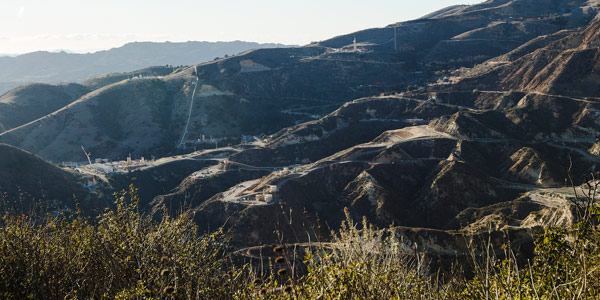By Robert Mullin
CAISO’s Board of Governors has approved a proposal to extend most of the temporary Tariff provisions the ISO implemented in June in response to natural gas pipeline restrictions stemming from the closure of the Aliso Canyon storage facility.
The ISO will now seek expedited approval from FERC to extend the measures through Nov. 30, 2017 — a year beyond the original sunset date.
While the region weathered the summer without grid emergencies, the ISO has identified a continued risk of gas shortages for generators in the face of limited operations at Aliso Canyon during the winter, according to Cathleen Colbert, senior market design and regulatory policy developer at CAISO.
“The goal [of the extension is] to determine what provisions were needed for winter reliability,” Colbert said during a Sept. 26 call to discuss a draft final proposal to renew the measures.
CAISO implemented the changes to ensure reliable grid operations in the face of potential gas shortages during the summer, the region’s peak season for electricity consumption. (See FERC Approves CAISO’s Aliso Canyon Response Plan Ahead of Summer.)
The provisions were geared to helping Southern California gas-fired generators manage their gas burns to avoid system-balancing penalties and enable them recover gas costs after the fact, while providing the ISO the flexibility to move energy into the region during periods when gas supplies became constrained.
During winter, electric load is not the “primary driver” of gas imbalances, as the bulk of gas demand shifts from “non-core” gas customers such as electric generators to “core” residential heating customers, Greg Cook, CAISO director of market and infrastructure policy, told the board during an Oct. 3 call.
“It’s good to note that the non-core generators are the first to be curtailed in the event that we do not have sufficient on-system gas to meet the core and non-core demand,” Cook said.
Among the measures CAISO proposes to extend:
- The release of advisory schedules by CAISO two days ahead of an operating day to help scheduling coordinators plan for gas procurement further in advance.
- The ability of generators to reflect gas cost expectations into day-ahead bids by using an approximation of next-day gas prices, which are published after the ISO’s morning day-ahead market runs. ISO rules typically require generators to incorporate the previous day’s next-day gas prices into energy bids.
- A gas adder and an after-the-fact cost recovery mechanism for generators connected to the Southern California Gas system to tie cost recovery and penalties to same-day gas prices rather than day-ahead gas indices.
- Authority of the ISO to manually override its “dynamic competitive path” assessment when it determines that the transmission path is no longer competitive in the face of a gas constraint.
- Suspension of virtual bidding in circumstances when CAISO determines the practice could produce market inefficiencies.
CAISO also seeks to refine a provision allowing it to enforce a market constraint that limits the minimum and maximum amount of gas that can be burned by generators in the affected area during periods of restricted gas supply. The refinement would set a limit on the maximum burn only.
One key provision from the original Aliso Canyon plan is on the chopping block: a measure that allows the ISO to reserve transmission capability on the Path 26 transmission line linking the Pacific Gas and Electric and Southern California Edison service territories in order to ensure adequate delivery into the southern part of the state during gas restrictions.
CAISO says it no longer needs that capability because Peak Reliability, the reliability coordinator for most of the Western Interconnection, recently modified its system operating limit (SOL) methodology to allow Path 26 to exceed its capacity rating under emergency conditions.
One board member expressed concern that the expanded limit would provide the ISO with only a short timeframe in which to respond to a gas-driven grid emergency before being required to return the line to its SOL.
“Why wouldn’t it be prudent to retain the internal capability?” asked board member Dave Olsen. “Are we giving up flexibility it would be prudent to retain?”
Cook responded that the new SOL methodology provides CAISO with the reliability protections it was seeking when it originally proposed the Path 26 provision — which had prompted concerns from some market participants about the impact on the ISO’s congestion revenue rights market.
“Now that we have this increased flexibility provided by Peak [Reliability] that helps deal with the reliability concern, it’s probably best to retire that provision so that those market concerns could go away,” Cook said.
The ISO plans to file the updated Aliso Canyon proposal with FERC in mid-October.




